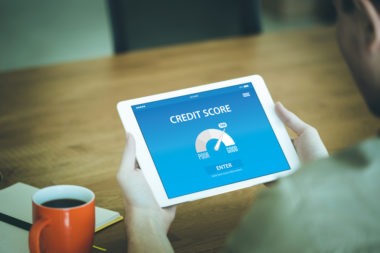When you need to make a large purchase, loans and lines of credit are two of the major tools potentially available to you. They fulfill different needs and function differently, so which you end up using depends on your borrowing circumstances:
- The amount you need, and whether it’s a one-time expense, or ongoing.
- Your credit score, which affects the kinds of services you can acquire, the interest rate, and the total amount you can borrow.
- Whether you need to make single or multiple payments.
Table of Contents
Loans Have Fixed Borrow Amounts, Credit Lines Have Variable Borrowing
One of the key differences between a loan and a line of credit is flexibility. A loan is typically a single lump sum, often for a very specific purpose. If you take out a car loan, for example, the lending institution will expect that you use the loan to purchase a vehicle, and not anything else. Often, in processes such as buying a home or vehicle, the money never comes into your personal control — it’s transferred directly between institutions on your behalf; you sign the paperwork, and begin repayment. In other words, you ask a lender to buy you the car or home, and promise to pay them back for their service.
Lines of credit, on the other hand, are much more flexible. There are different forms a line of credit might take; most commonly a credit card, but banks also issue them directly as credit accounts.
Sometimes, both loans and lines of credit are secured, meaning you borrow against the value of something (like your house or car), but not always. Secured or unsecured, with a line of credit, the issuing bank gives you an amount of credit to work with (your borrowing limit), and you can feel free to use as much or as little of it as you want over any time period.
Loans amounts are set by the specific purchase you intend to make, lines of credit can generally be used for any purpose. This makes lines of credit ideal for circumstances in which you’re not completely sure of the final cost — such as home renovations.
Loans Are All up Front, Lines of Credit Have Flexible Timing
When you take out a loan, the assumption is that you need and will use the entire sum of money right away, and then begin paying it back over a set term. As soon as the loan funds are made available to you, the clock starts ticking on interest rates for the entire amount. So if you’re going to use anything less than the entire amount of the loan, you’re paying interest on money that you’re not using.
On the other hand, lines of credit are typically revolving; that is, you can borrow and repay funds on an ongoing basis. They have a credit limit — the maximum amount you can borrow and spend at any time — but you can borrow in smaller increments, and repay them every month without ever reaching that limit.
Some lines of credit have limited draw periods, a specified amount of time during which you may use the funds to make payments (most common with home equity lines of credit). Once the draw period is over, you must repay the outstanding balance just as you would a loan. Other lines of credit are unlimited, and allow you to draw and make payments whenever you like, unless you lose access to the line or hit the credit limit. Credit cards are the most common example: as long as you make your monthly payment, you can continue to charge.
The other advantage to revolving lines of credit is that they don’t go away unless you do something to lose access to them, or choose to close/cancel them. Once a line of credit is paid off, it can be utilized again, whereas with loans you would have to apply for a new one. Delinquency and missed payments can cause you to lose access to a line of credit, however, and they can be canceled.
Interest Rates and Repayment Terms
One downside to personal lines of credit is that they often carry high interest rates when compared to personal loans. This isn’t always true, but in general:
- Unsecured loans lines of credit both tend to have higher interest rates.
- Interest rates on lines of credit fluctuate as you spend, because you are raising the principal amount being borrowed on credit. Interest on loans goes down gradually as you pay off the principal, and the principal on loans never increases.
- Credit cards often have higher interest rates but are also highly regulated and predictable. Lines of credit have interest rates that vary widely depending on the institution, and penalties for missed payments can be severe.
- Lines of credit come with temptation to keep spending and potentially misuse them. In many cases, your monthly payment is based on interest, rather than a combination of interest and principal. Many people are irresponsible with access to credit, and spend beyond their means to repay the money by focusing only on their interest payments, rather than the full amount of the debt. With loans, you assume the full debt upfront, and can generally owe a portion of both principal and interest each month, so paying the minimum actually reduces your overall debt.
Another reason for the higher interest on lines of credit is they often don’t come with strict repayment schedules. There is usually a minimum payment to cover interest, but they may not require a payment toward the principal amount. On the other hand, if you borrow in small enough installments and pay the entire principal each month, you can avoid interest entirely.
When you secure a loan, it often comes with a fixed monthly payment that is calculated to pay the interest as well as pay down a small chunk of the principal amount. You can normally opt to increase the amount you pay to reduce the length of the repayment term and the amount of interest you pay.These payment plans offer predictability for both the lender and the borrower. Because you can make use of any amount of a line of credit at any time, they generally don’t come with repayment plans. This makes them somewhat more unpredictable for both parties.
Effect on Credit Scores
When you take out a loan, your debt to income ratio and your credit utilization immediately take a hit. Put simply, when you take out a loan, you are considered to be borrowing the entire These are both factors that credit scores take into account: how much debt you have compared to how much money you make, and what amount of your total available credit you are currently using.
This can mean that one big loan makes it difficult to get credit in other areas, as it can lower your score. On the other hand, many loans are considered to be “good debt” — mortgages, student loans, auto loans — which, as long as you pay your bills on time, go to strengthening your overall credit score as you pay them down.
Lines of credit have a less immediate impact on your score, and their level of risk generally depends on your spending and repayment habits. You don’t use the money right away, so your debt to income ratio is only calculated on how much you use, not on the entire amount. They increase your available credit, which means that as long as you don’t use all of it at once, they can improve your credit utilization ratio. Your credit utilization ratio is basically a comparison between how much credit you have available, and how much you use. The more credit you have available compared to your debt, in general, the better.
Your income is taken into these calculations. If you have a high amount of available credit compared to your income, future lenders may hesitate to offer you credit even if you have a good credit score.
Behaviour has the biggest impact on your actual score, so the largest danger with having a lot of available credit is whether you’re likely to over-spend. Exercising discipline with how you utilize credit is the most important consideration.
Lines of credit are often more difficult to acquire, and have a higher barrier to entry than loans. Loans and lines of credit generally both have options for borrowers with lower credit scores. These generally take the form of secured options, where you would take out the loan or credit line against your physical property. Home equity loans or lines of credit are both options for people with lower credit scores, as they backed by the value of your home, and offer a little more flexibility.
Uses for Personal Loans vs Personal Lines of Credit
In general, lines of credit are best used for nebulous projects that could potentially cost more than you expect, whereas loans are best used for firm, predictable expenses. Lines of credit are great for recurring purchases or incidental spending whereas loans are better for single events and major purchases.
A loan might be used for:
- Purchasing a vehicle (car/auto loans).
- Buying a house (mortgage/home loans).
- Paying for a wedding.
- College tuition (student loans).
A line of credit might be used for:
- Home renovations.
- Restoring an antique vehicle.
- Landscaping.
- Travel.
- Shopping and everyday expenses.
Lines of credit, while much more flexible than loans, can be risky. They don’t come with a predetermined repayment plan, which means you need to pay very close attention to how and when you use them, and how that use changes the monthly interest charges. Generally, lines of credit require additional financial planning, but loans can be risky as well. The minimum payments can be higher and less manageable, because you’re paying on the full amount right away. Whether either benefits you or hinders you will depend on your ability to stick to a budget, spend responsibly, and make regular payments.
A personal line of credit, however, makes extended, nebulous, or repeating projects a lot easier to handle, because the money becomes available for you to spend again as soon as you pay it back.
Image Source: https://depositphotos.com/




